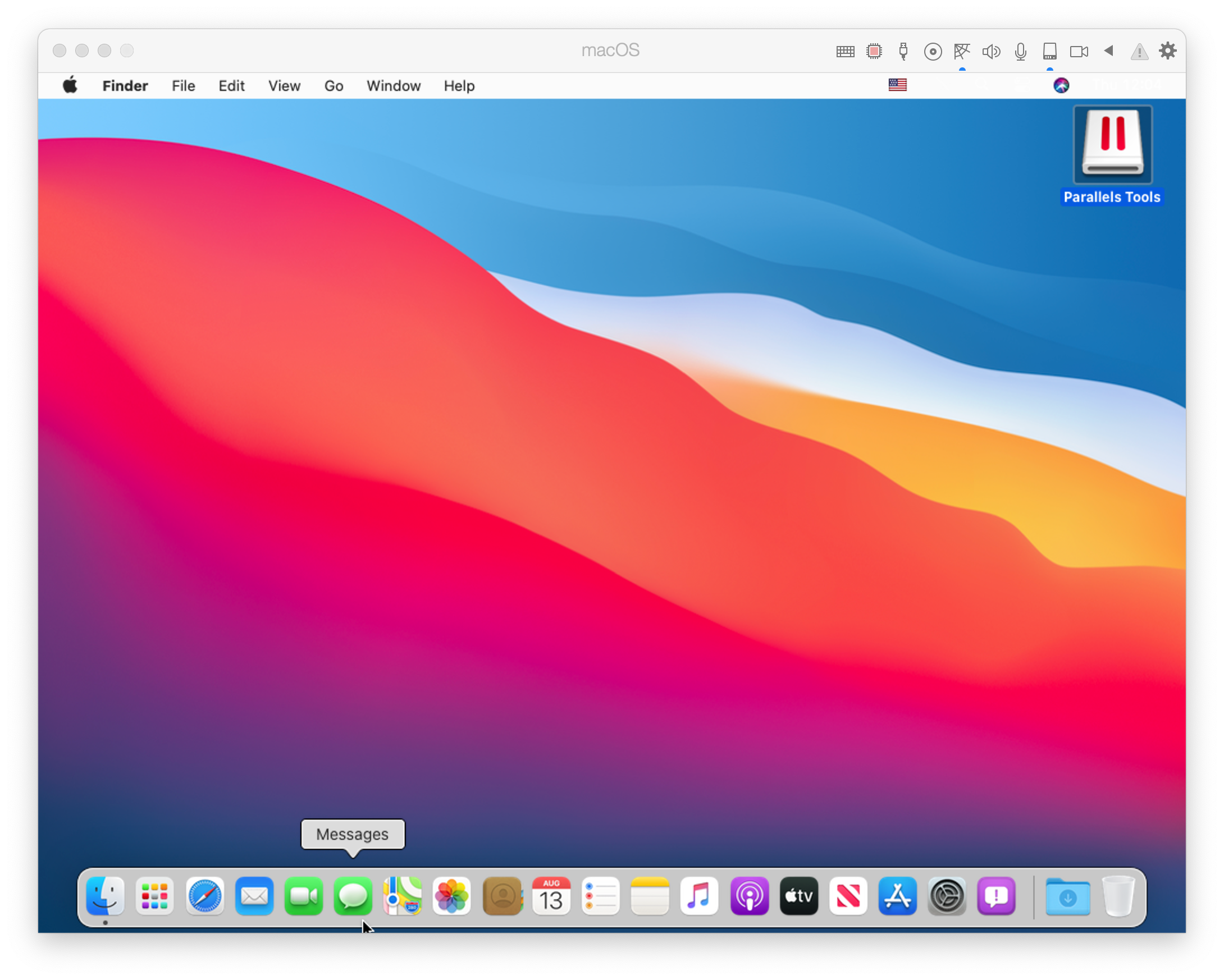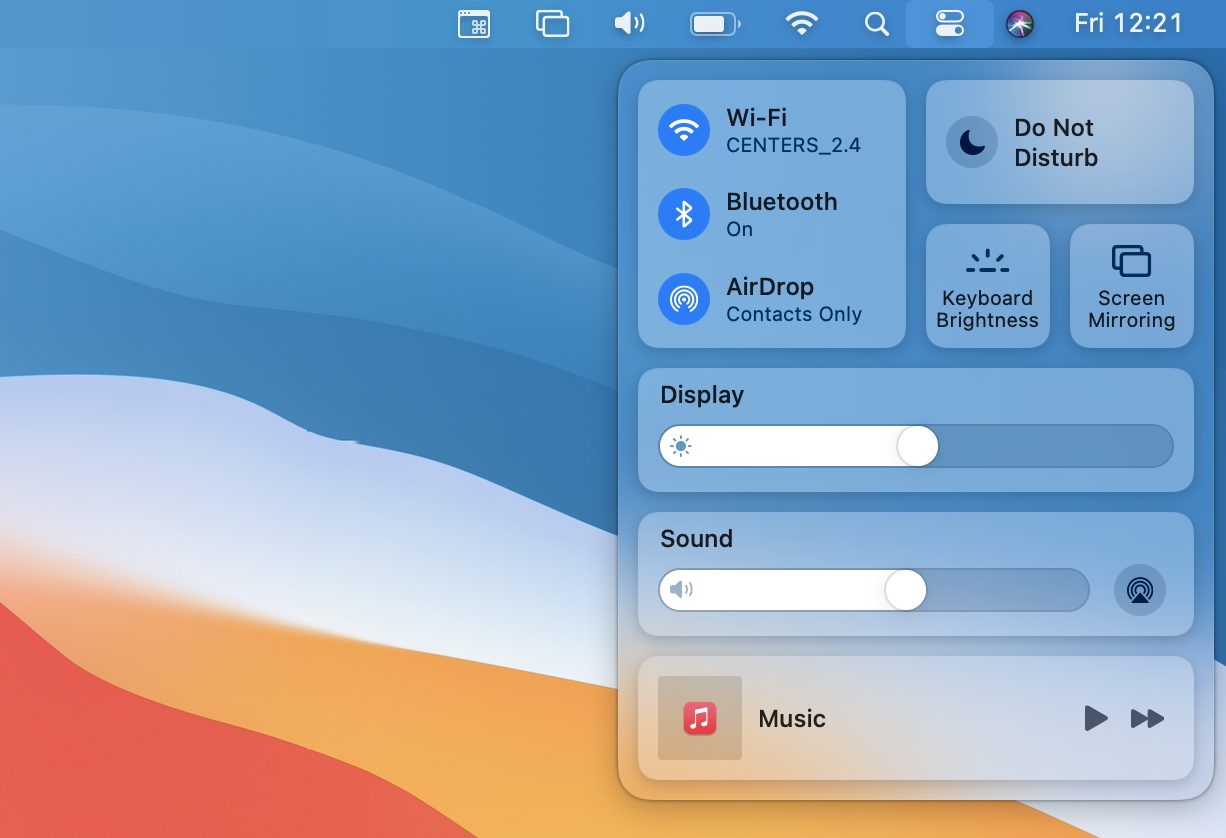☛ Get Parallels Desktop 16 For Mac - how to get Parallels Desktop 16 on Mac. Get Parallels Desktop 16 for Mac. When running macOS Big Sur, the M1 MacBook Pro with 8GB RAM has a single-core Geekbench score of 1719 and a multi-core score of 7384. When running Windows 10 through Parallels using the.
Parallels Macos Big Sur
Apple’s “one more thing” event on November 10, 2020, revealed the first Mac computers powered by the Apple M1 chip.

Parallels is excited to see the performance, power efficiency, and virtualization features that are brought to the Mac with the Apple M1 chip. The transition to Mac with the M1 chip should be smooth for most Mac applications, thanks to Rosetta technology. Fortunately, Parallels Access™, Parallels® Toolbox, and Parallels® Client software worked smoothly as universal binaries even before Parallels rebuilt them. However, virtual machines are an exception and Parallels engineers proactively implemented native virtualization support for Mac computers with the M1 chip. This enables our users to enjoy the best Windows-on-Mac experience ever.
Learn more about the new version in this blog post.
When Apple Silicon Mac was first announced during the keynote at WWDC on June 22 of this year, Apple demoed a Parallels Desktop for Mac prototype running a Linux virtual machine flawlessly on Apple Silicon. Since WWDC, the new version of Parallels Desktop, which runs on Mac with the Apple M1 chip, has made tremendous progress. We switched Parallels Desktop to universal binary and optimized its virtualization code; Apple M1 Mac computers and macOS Big Sur became available, and Microsoft announced and then introduced support for x86_64 applications in Windows on ARM Insider Preview.
As our customers know, Parallels cares deeply about the quality of our software products and the experience they provide. With macOS Big Sur and the new Mac with Apple M1 chip available, we continue to conduct more extensive evaluations, both in our lab and with your help via the Parallels Technical Preview Program. More than 100,000 M1 Mac users tested the Technical Preview of Parallels Desktop 16 for M1 Mac and ran Microsoft’s Windows 10 on ARM Insider Preview, as well as tens of thousands of different Intel-based Windows applications—including Microsoft Office for Windows, Microsoft Visual Studio, SQL Server, Microsoft PowerBI, and MetaTrader.
We received enthusiastic feedback about the remarkable performance of both the Technical Preview of Parallels Desktop 16 for M1 Mac and Windows 10 on ARM Insider Preview as well as x86 applications and the games inside it, including Rocket League, Among Us, Roblox, The Elder Scrolls V: Skyrim, Sam & Max Save the World, and many others. Testers loved Parallels Desktop’s easy to use features, and seamless integration of Windows and its applications with macOS Big Sur, which increased their productivity.
On April 14th 2021, the new update for Parallels Desktop 16 for Mac was released and now features support for both Mac computers with Intel processor as well as Mac computers with Apple M1 chip.
The new Parallels® Mac Management for Microsoft System Center Configuration Manager (SCCM) version 8.6 keeps the only solution for managing Apple Mac devices on Microsoft SCCM in step with macOS’s latest major update, macOS version 11—Big Sur. In addition to providing support for Mac devices running Big Sur, Parallels Mac Management 8.6 also comes with some changes you might want to be aware of.

Here’s an overview of the key changes that accompany the latest version of Parallels Mac Management.
Support for macOS Big Sur
macOS Big Sur is arguably the biggest update to Apple’s operating system for Mac devices in the past decade, as it reflects the gradual transition of the Mac lineup to Apple’s own in-house-designed processors. Since 2001, macOS versioning has been following the 10.x notation. The last of that breed, macOS Catalina was tagged version 10.15. macOS Big Sur is the first to bear version 11.
As soon as your business decides to migrate your Mac devices to the next generation of macOS starting with Big Sur, rest assured you’ll already have the capability to manage them on Microsoft SCCM when you use Parallels Mac Management 8.6.
Installation of Configuration Profiles
Configuration profiles provide IT administrators an easy way to enforce compliance requirements as well as configure settings, accounts, restrictions and credentials automatically on a large number of Mac devices. A typical configuration profile may contain predefined settings for passcode policies, Exchange account configurations, network settings, credentials, keys and many others.

In 8.6, configuration profiles can only be deployed to Mac devices running macOS Big Sur via mobile device management (MDM). This means those Mac devices should be enrolled in MDM first. You don’t need to change anything regarding configuration profiles for older macOS systems—they will continue working as usual.
Automatic MDM Enrollment

As with the installation of configuration profiles (see previous section), automatic MDM enrollment has likewise changed for Mac devices running macOS Big Sur. In the past, it was possible to enroll all Mac computers in MDM automatically without user interaction if they were already enrolled in SCCM. Now, in version 8.6, automatic MDM enrollment requires user approval.
This user-approved MDM enrollment process is carried out in the following manner:
- The administrator configures automatic MDM enrollment for Mac devices.
- The Mac user gets notified that the Mac should be enrolled in MDM.
- The user approves the enrollment.
Again, this applies only for Mac devices running Big Sur. Older Mac devices may be enrolled using usual methods of enrollment.
FileVault 2 Encryption for Mac Devices
One more change that affects Mac devices running on Big Sur is the enforcement method of FileVault 2 encryption. In the previous version, as soon as a configuration baseline is deployed to a device collection, Mac computers in the collection are evaluated immediately for compliance. If FileVault 2 is found to be disabled in a Mac, the user will be prompted with a message indicating that the device is about to be encrypted.
The user will then be given the option to proceed with the encryption or to postpone it. If the user chooses Encrypt, the encryption process will commence. On the other hand, if the user selects Postpone, the user will be prompted repeatedly (with gaps of a few minutes) until the user clicks Encrypt instead of Postpone. This can be very distracting if the user is still working on something.
Parallels Crack For Big Sur
In version 8.6, FileVault 2 encryption enforcement is delayed until the user logs out, thereby minimizing unnecessary distractions. The FileVault 2 encryption enforcement process now involves the following steps:
- The administrator configures FileVault 2 encryption.
- The Mac user gets notified that the Mac device is due for FileVault 2 encryption.
Install Big Sur On Parallels
- Encryption starts on the next login or logout.
Enforcement of TLS Version for PMM Components
The Transport Layer Security (TLS) protocol secures communications among Parallels Mac Management components as well as between Parallels Mac Management components and Mac devices. This ensures establishment of an acceptable level of trust before any two points commence data exchanges and protects all communication from network-based threats through data-in-motion encryption.

However, because lower versions of the TLS protocol have known vulnerabilities, TLS security can only be truly effective if those lower versions are avoided. In Parallels Mac Management version 8.6, it’s possible to manually control the minimum TLS version to be used in communications to ensure optimal security.
All these new features are available in all SCCM versions up to SCCM 2006 as long as they have the Parallels Mac Management version 8.6 plugin. Should you wish to try them out, you may grab your free trial copy of Parallels Mac Management now.
